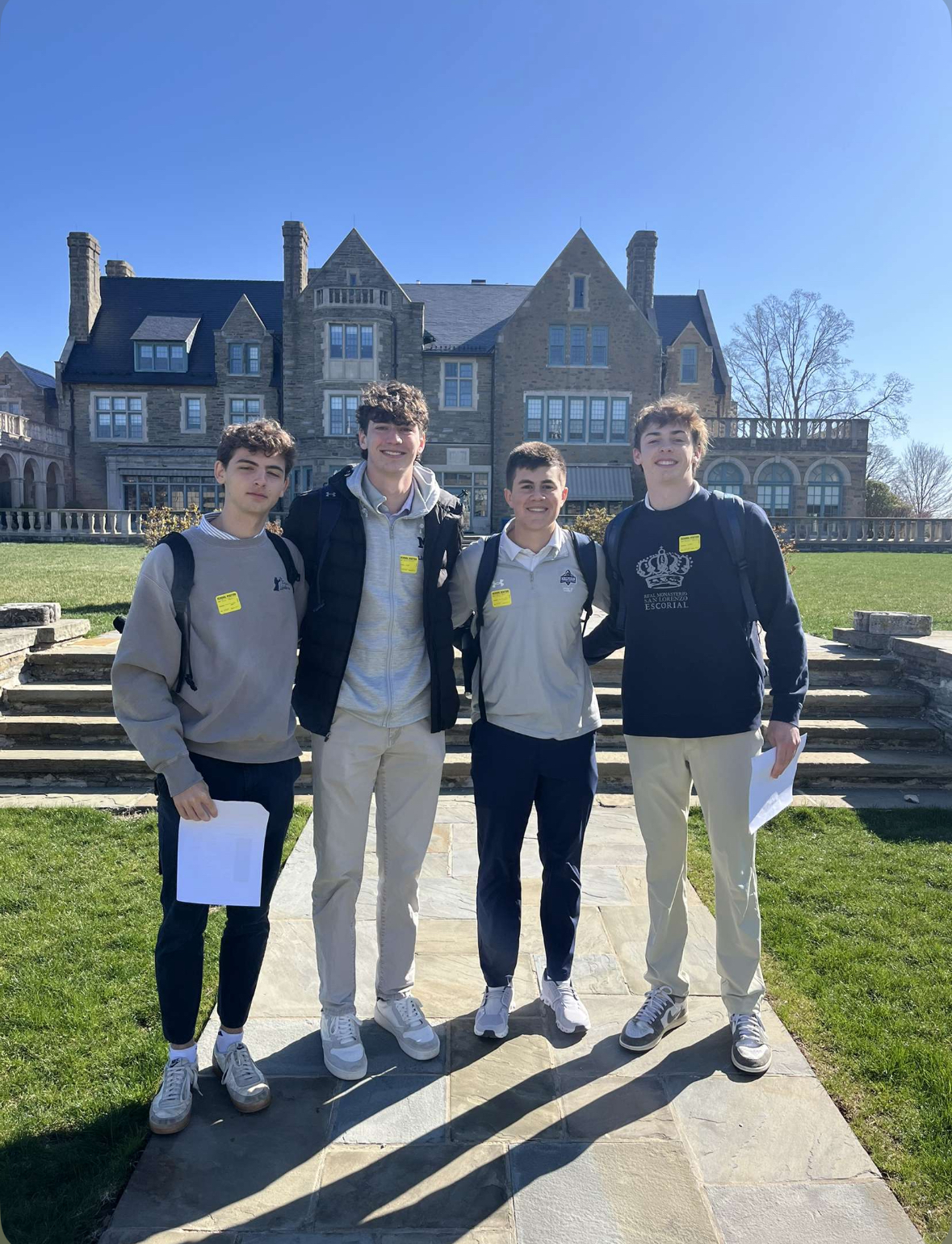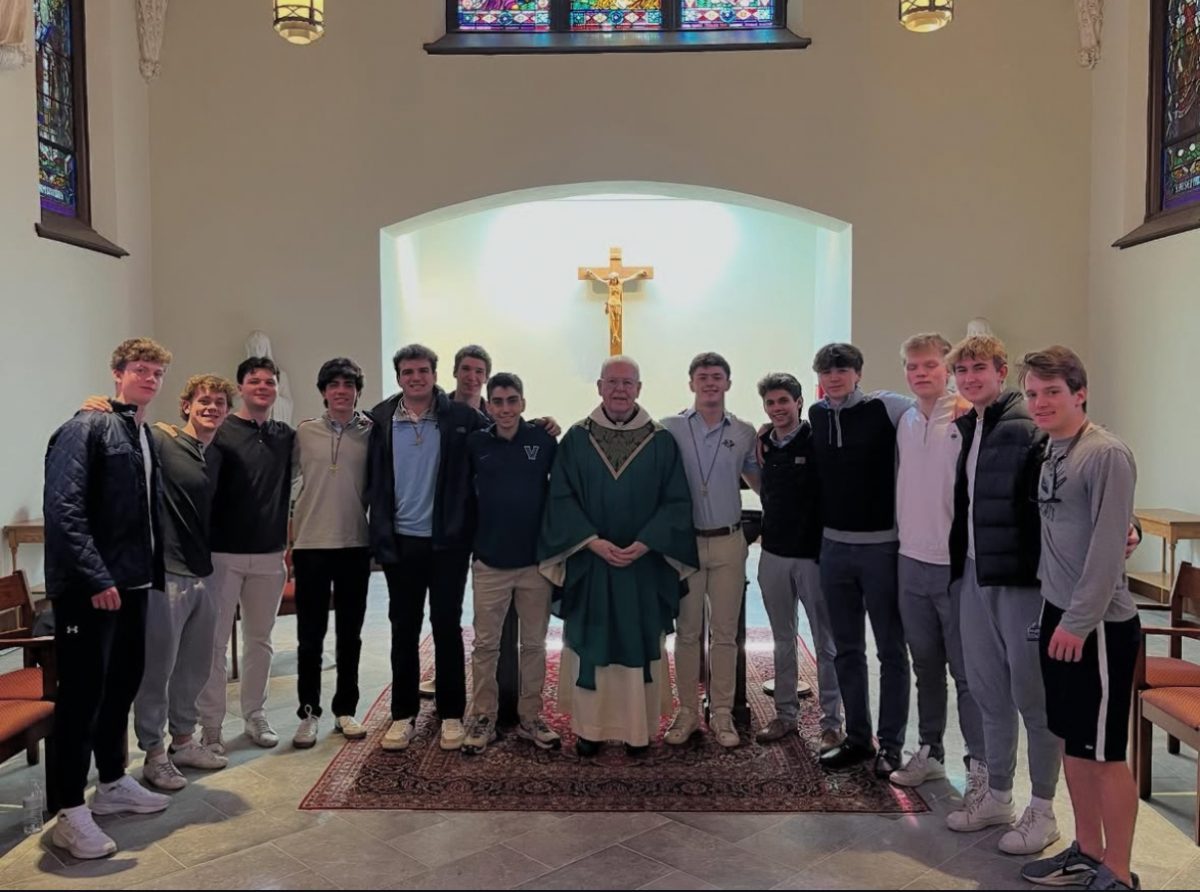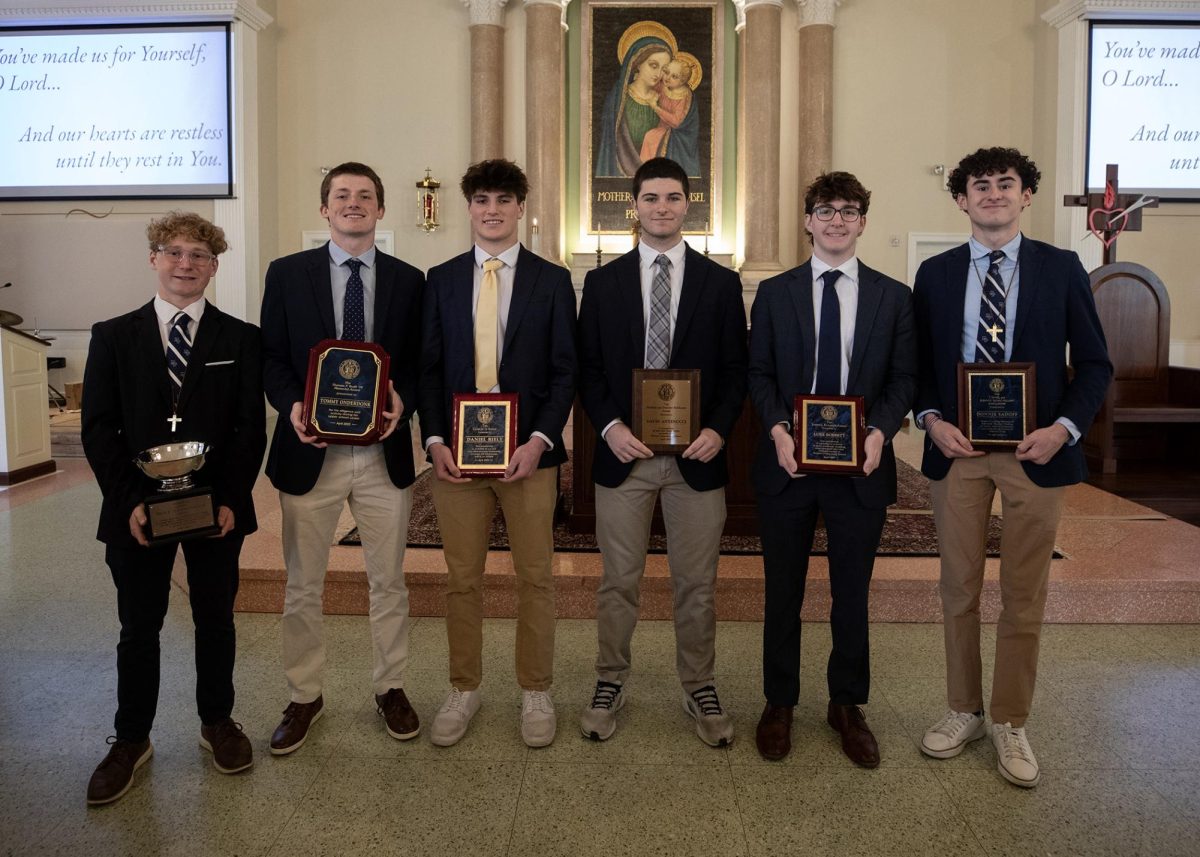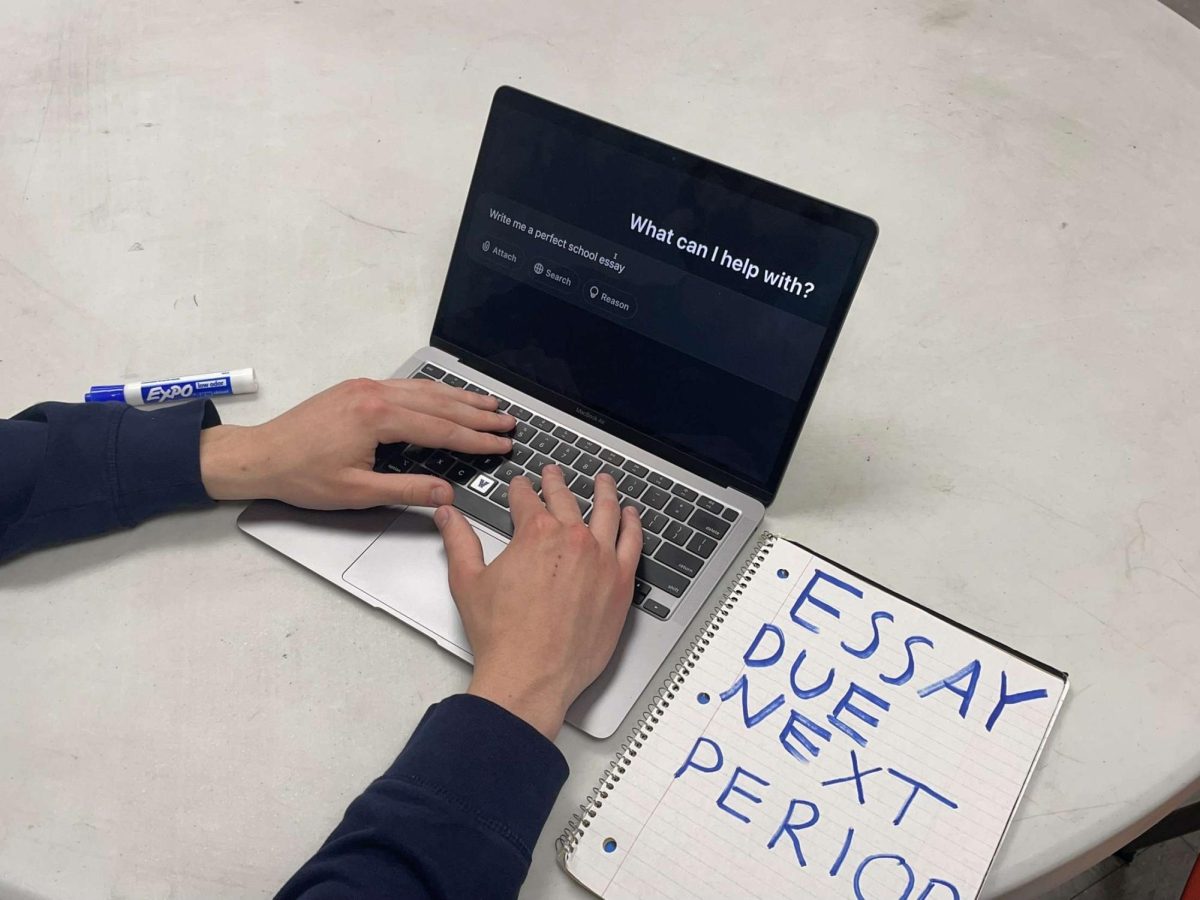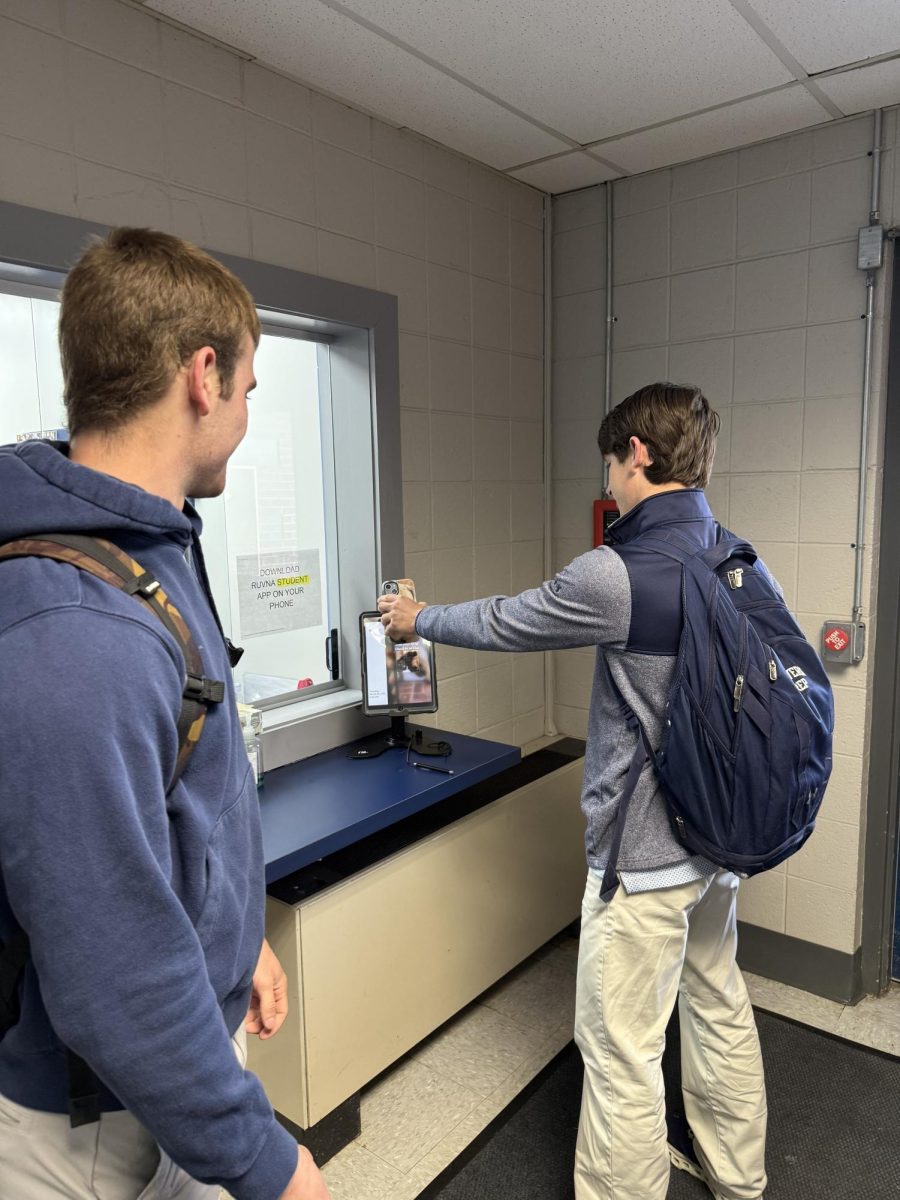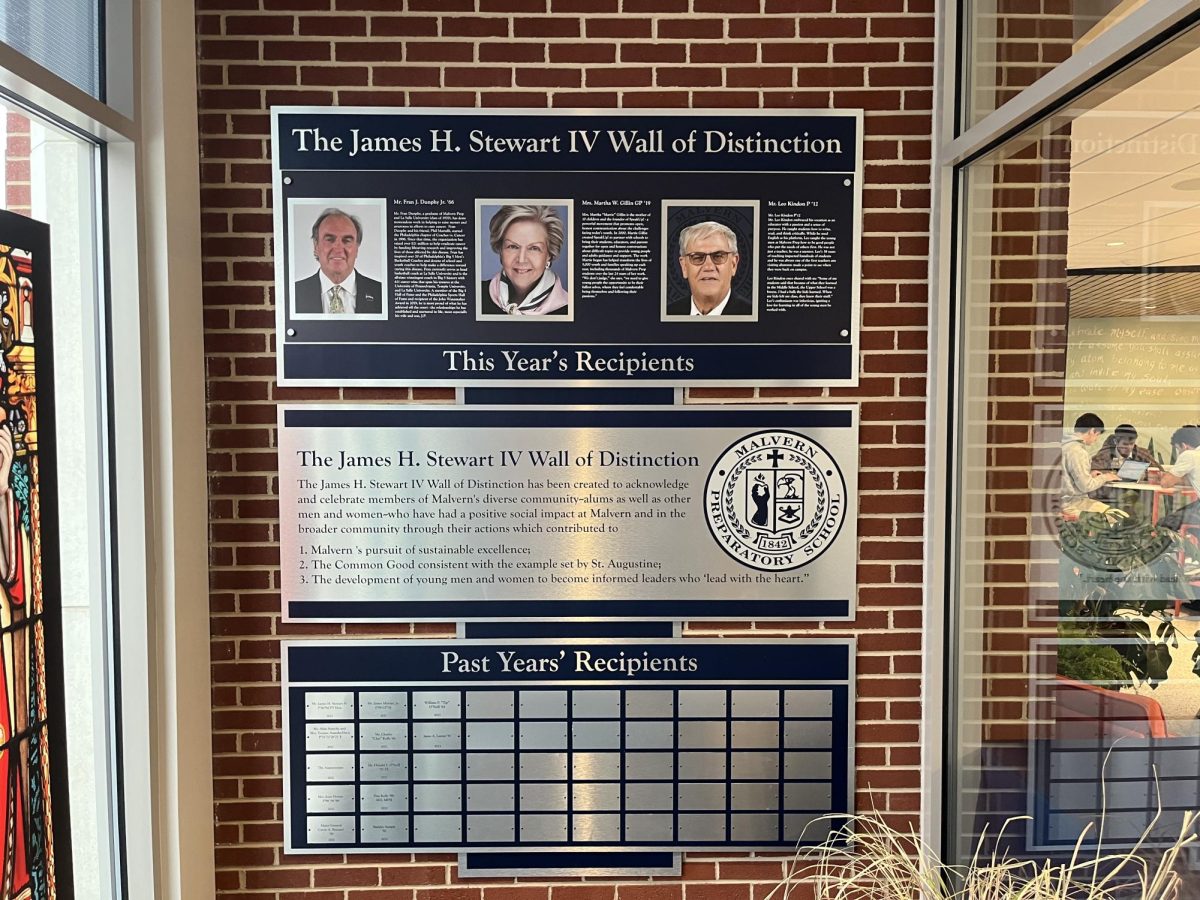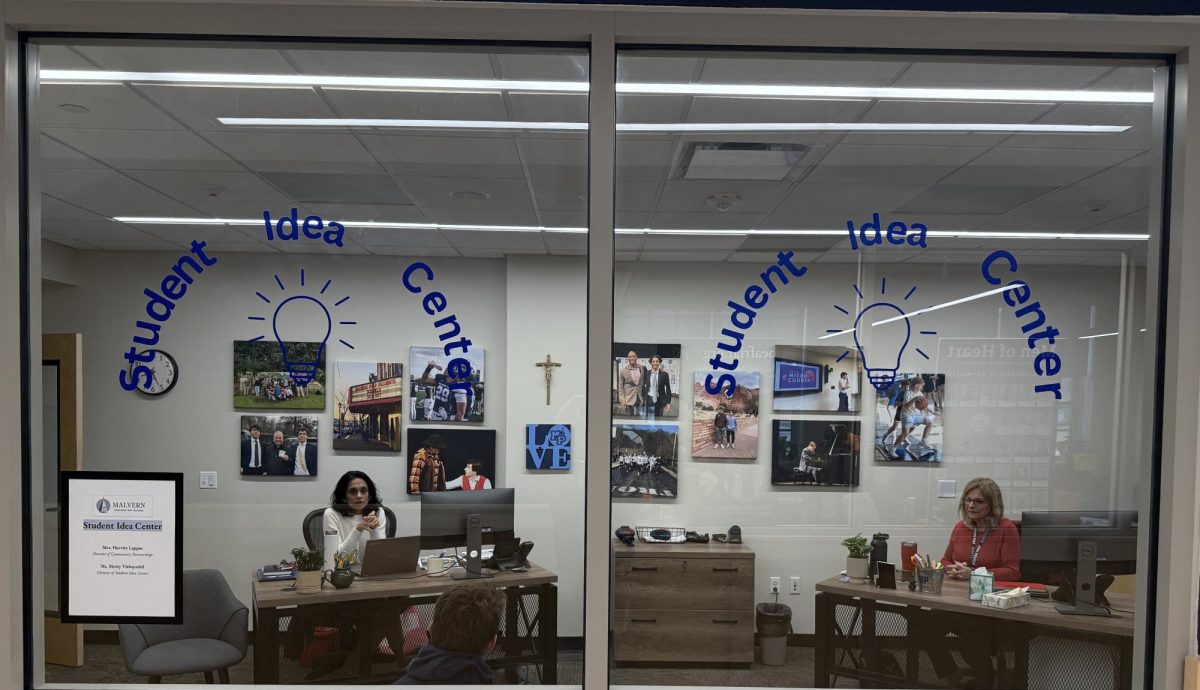
The newspaper swap day, where seniors from the Malvern Prep Friar’s Lantern visit a local all-girls school and write about their experience, has been a tradition since well before COVID. This year, we traveled alongside Nino Sindoni, the host of News with Nino, for this experience.
Our school day at the Academy of Notre Dame started at 8am. When we arrived, we checked in at the front desk before making our way to our first period. Upon meeting our student hosts, we split into groups of two and went to different theology classes. Nino and Sean went to Catholic Morality with Mr. Lopez, while Michael and Brody went to World Religion with Dr. DaCreme.
We shadowed Ava DiGuiseppe ‘25 and Shelby Parker ‘26, who were very nice and welcoming. Additionally, we are very thankful for Ms. Leslie Mackey, Notre Dame’s newspaper moderator and English teacher, who organized the Notre Dame side of the swap.
In Catholic Morality, we spent the class listening to a fifty-minute project presentation by a student on AI and how it relates to Catholic morality, humans, the environment, and the world. As we entered the class, we noticed the vast majority of the students had either a beverage from Starbucks or a Stanley tumbler on their desk. This seemed to be the feminine parallel to the tendency for most Malvern students to have protein or energy drinks. In addition to the beverage similarity, many students at Notre Dame had their laptops out on their desks during class, often following along with class notes or other materials online. Most class sizes seemed to be similar to or slightly smaller than Malvern, with about fifteen to twenty students in each section. However, AP Art History, a class on our schedule later in the day, only had a handful of students.
Following the theology classes, our hosts had homeroom, where students were allowed to check in and go about their day. Instead of going to homeroom with them, we walked around and then went to the Senior Lounge (dubbed Slounge), where we met students and asked them their favorite parts about Notre Dame. We also asked whether they like their schedule and how much free time they have, both topics that we’ll cover later in this article. From there, we moved on to our next classes: AP US History and AP Art History.
Next, our hosts took us to lunch, which we’d sit in the cafeteria to eat. One of the areas in which Malvern definitely excels compared to Notre Dame is in the cafeteria. Notre Dame’s cafeteria was smaller and more cramped compared to Malvern, where there is ample area to sit. Additionally, we and the girls all said that the food was worse compared with Malvern, partly due to the limited options. When we walked into the cafeteria, all the girls were telling us not to get excited about lunch because it is typically not very good. There were very few options to eat, and it really just did not taste very good. They did, however, have a market styled very similarly to our Friar’s Cup Cafe, where we found amazing options and many that Malvern did not offer.
We finished the day going to AP Language and a traditional art class. During the day, we made many observations about the classes and how the school day was structured.
Many of the classes, like AP US History and AP Art History, were very discussion-based. The teachers would lead interactive conversations with their students instead of speaking for an hour-long lecture. This strategy seemed to work well with the girls, and their comments regarding these classes were very positive.
Perhaps the most unusual of our interactions were in the hallway, where girls did not expect our presence. As the only non-faculty and staff men on campus, we received some stares and felt a lot of awkwardness. It was definitely interesting to see the comfort level grow throughout the day. In the first few hours, it was evident that the girls did not know what to do with boys at their school, but then throughout the day they got more comfortable with it.
Notre Dame also had a significantly different schedule from Malvern. As opposed to our block schedule, where we switch our intensive classes each quarter, they have what is known as a waterfall schedule. This entails five classes a day for five days a week, where two classes fall off your schedule each day. This results in students having three hour-long class periods a week for each class. Malvern had a nearly identical schedule in the 2010s. Mr. Tom Verdi, Notre Dame Social Studies teacher, shared his thoughts on the schedule.
“Our schedule is called a waterfall schedule. I really like it because it rotates, and you get some days off. We have extended class times to accommodate the two drop periods. It certainly is challenging to run an AP curriculum with three days dropped every eight days. We’ve been doing it for a while, so you just have to adapt,” Verdi said.
After our day of learning at the Academy of Notre Dame, we felt very positive about the schedule. The opportunity to have each class every week seemed to function much better than our schedule with bridge days. They are able to have 3 classes per week; this opposes how we have 4 of our classes only once a week on Mondays. We believe that this significantly helps the higher-level classes like AP and Honors that need to cover so much material, and it helps the students retain information better.
The only real complaint that we got about this schedule was that students do not have a free period every day. Opposed to Malvern, where students often have at least one free period per day, this waterfall schedule may lead to girls having a couple days a week with 5 classes and no free time. In an interview we conducted with two seniors, Emma Strid and Surya Puri, they discussed how a lack of free periods affects them.
“I like these five classes, but last year we had a longer community time and shorter classes. And I liked that better because it was more free time to do work.” Strid said.
Because of the waterfall schedule, when the girls do get free periods, it is only a few times per week.
“I don’t have that much free time because I take really academically challenging classes. I get about an hour three times a week.” Puri said.
In order to counteract the lack of free periods, the girls have an hour-long homeroom that they can use similarly to Malvern’s community time. It is a time when clubs meet, students meet with teachers, and students can get homework done or work on projects.
They also have an interesting phone policy. During the aforementioned homeroom, the girls must place their phones in a classroom before they venture out to do something. This is to promote interaction amongst the students instead of them just paying attention to their phones. Additionally, on Wednesdays, the girls do not get to use their phones all day. They have to leave their phones starting in the homeroom and do not get them back until the school day is over. These policies are similar to Malvern’s current policy, where we put our phones in cubbies at the start of each class and then we get them back at the end.
Ultimately, the experience was very positive, and we all enjoyed our time there a lot. And another very large similarity between Notre Dame and Malvern was the response we got when we were in the senior lounge and asked what the girl’s favorite part of the school was. They all chanted out “the sisterhood” in unison.


